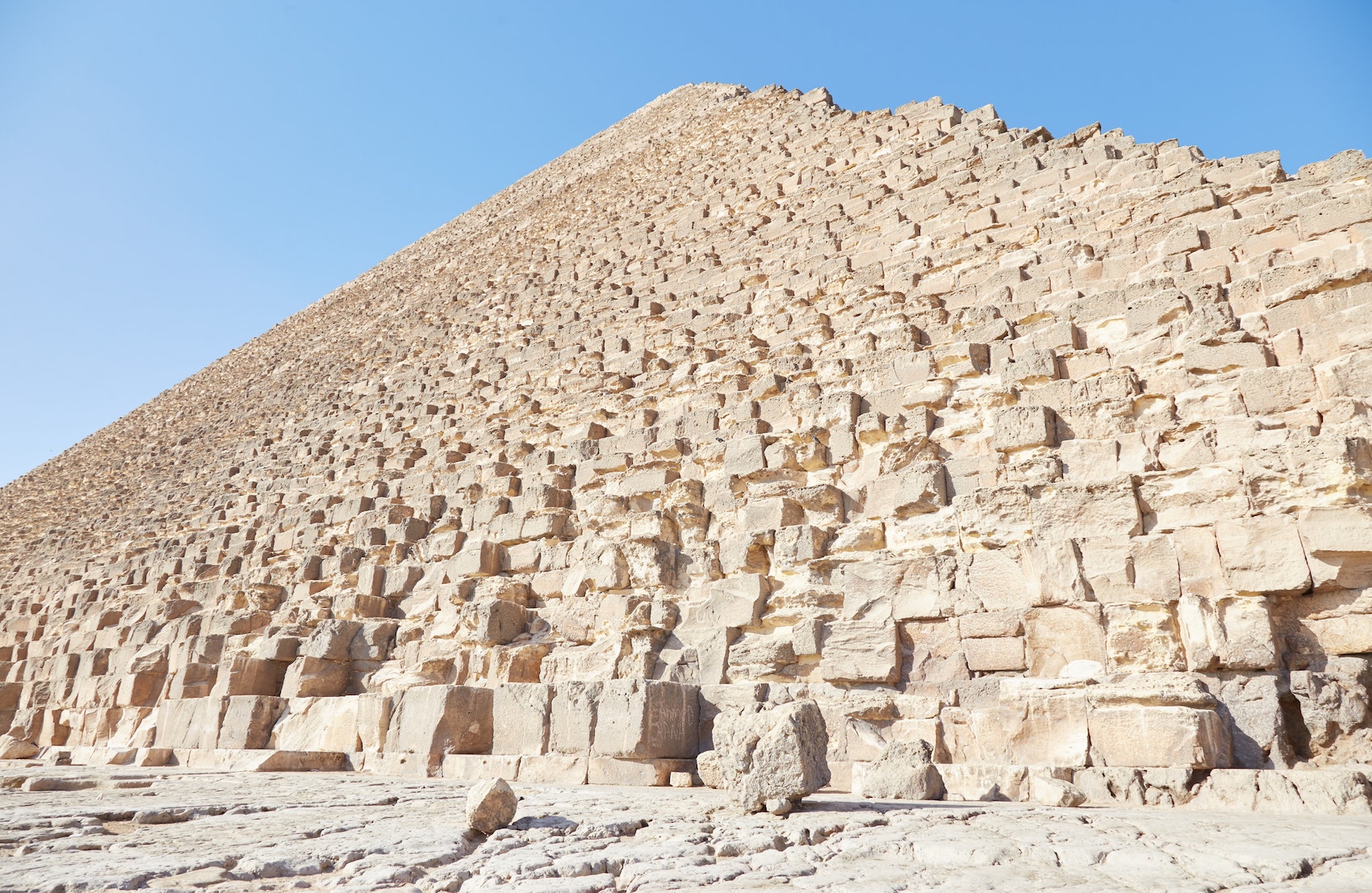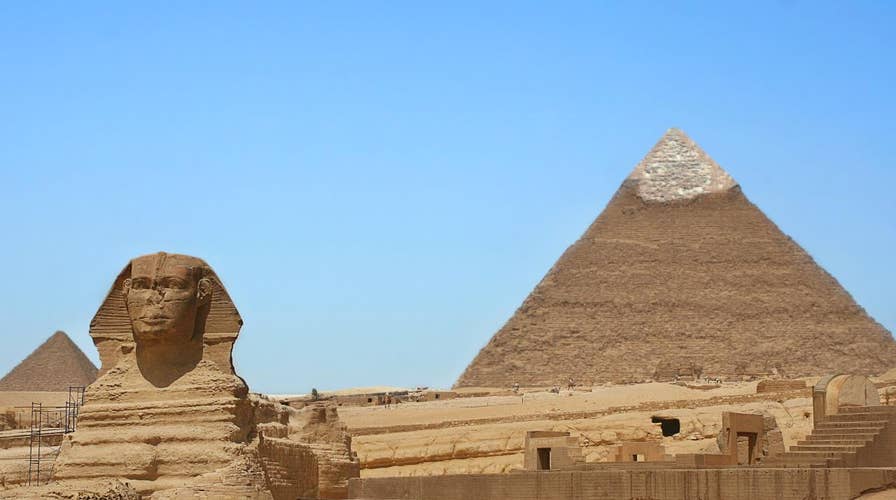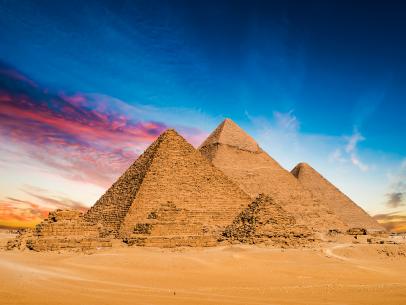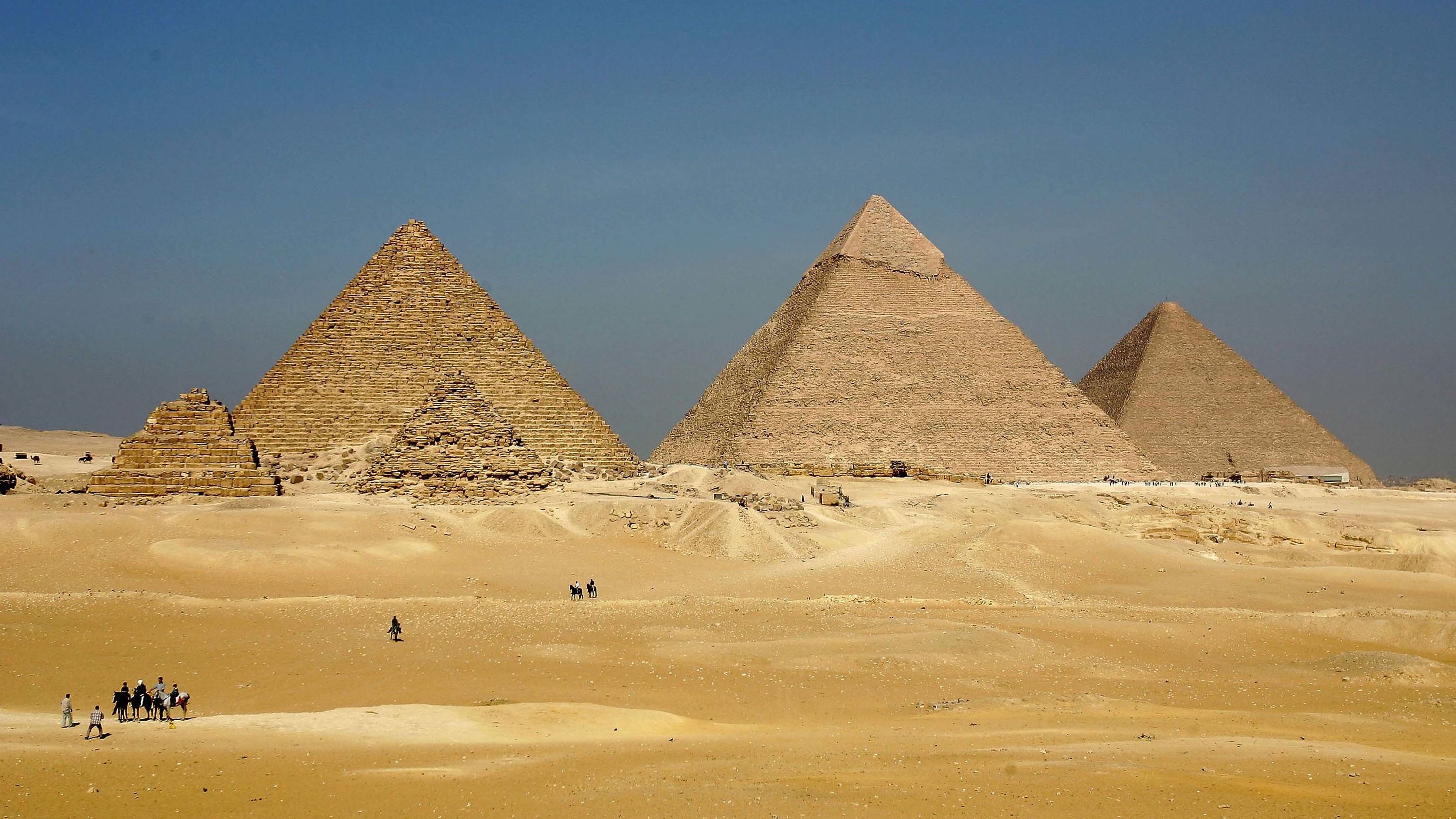The Great Pyramid of Giza: A Mystery That Has Yet to Be Solved
For centuries, the Great Pyramid of Giza has been a fascination for people all around the world. It is one of the most impressive structures in history, yet it still holds many mysteries that have yet to be solved.
Despite numerous theories and hypotheses, the question of how the ancient Egyptians could cut, transport, and assemble millions of limestone and granite blocks to construct the pyramid remains unanswered. However, recent discoveries and investigations in ancient Egypt have shed new light on the construction process and may finally offer a definitive explanation to the age-old puzzle.
In this blog post, we'll explore the history and mysteries behind the Great Pyramid of Giza and the latest discoveries that have brought us closer to solving the mystery of its construction.

Brief History of the Great Pyramid of Giza
The Great Pyramid of Giza is one of the most magnificent structures in the world and has always been a topic of great interest. Built over 4,500 years ago, it is one of three pyramids in the Giza complex that served as the burial sites for Pharaohs during the Fourth Dynasty reigns of Khufu, Khafre, and Menkaure. The building of the Great Pyramid of Giza is still shrouded in mystery, and the methods used to construct this enormous structure have been debated for centuries. Here are some fascinating facts about the Great Pyramid of Giza:
- The Great Pyramid was constructed during a frenetic construction period from approximately 2550 B.C. to 2490 B.C. Each Pharaoh built their own pyramid, and Khufu's pyramid is the largest of all the Giza complex pyramids and stands approximately 481 feet (147 meters) tall.
- The Great Pyramid was constructed using an estimated 2.3 million stone blocks, each weighing an average of 2.5 to 15 tons.
- It is believed that the pyramid was constructed as a monumental tomb for Pharaoh Khufu, who began the project, and that he expected to become a god in the afterlife. The pyramid was filled with everything each ruler would need to guide and sustain himself in the next world.
- Despite centuries of investigation, scholars still debate the construction methods used for the pyramid. Theories have been proposed involving ancient aliens, the use of wet sand, and evidence of canal and basin systems used to transport building materials.
- Recently, a hidden corridor measuring nine meters long was discovered close to the pyramid's main entrance during the Scan Pyramids project. The discovery provides new knowledge about the pyramid's construction and the purpose of a gabled limestone structure in front of the corridor. The mysteries surrounding it remain unsolved as we continue to explore and study the Great Pyramid of Giza. [1][2]

The mystery surrounding its construction
The mystery of how the Great Pyramid of Giza, one of the seven wonders of the ancient world, was constructed has long puzzled archaeologists and historians.
The sheer size and weight of the massive limestone and granite slabs used to build the pyramid make it hard to fathom how they were transported and raised to such great heights.
Over the years, several theories have been proposed to explain this mystery, including the involvement of ancient aliens and wet sand to slide stones across the earth.
However, recent scientific finds and studies have shed some light on the construction of the Great Pyramid, while others continue to intrigue researchers.
Here are some of the most significant findings and ongoing mysteries:
- Researchers have discovered evidence of a lost tributary to the Nile, which ancient Egyptians once used to engineer a complex network of canals and basins to transport building materials to the Giza plateau.
- Theories of using wet sand to slide the stone slabs have been proposed. Still, the exact method of hoisting the stones into place remains a mystery, and it is believed that part of the ancient Pharaohs' propaganda was to cultivate the mystery surrounding their construction.
- Muon radiography, an imaging technique using natural subatomic particles called muons, has revealed a hidden void at least a hundred feet long inside the pyramid, whose purpose and use are still unknown.
Despite these findings, the mystery of the Great Pyramid's construction remains, and ongoing research and studies continue to fascinate and puzzle both experts and laymen alike. [3][4]

Theories involving ancient aliens
One of the most popular theories surrounding the construction of the Great Pyramid of Giza involves ancient aliens.
While it's true that the sheer size and precision of this ancient wonder might seem otherworldly, there is no concrete evidence to support the idea that extraterrestrial beings played a role in its creation.
Instead, many archaeologists and historians believe the pyramid was built by skilled workers who used innovative techniques to move and shape massive stone blocks.
Here are a few reasons why the ancient alien theory doesn't hold up to scrutiny:
- The site has no physical evidence of alien technology or artefacts.
- The methods used to move and place the pyramid blocks are feasible with human labour and ingenuity.
- The pyramid's construction fits within the historical and cultural context of Ancient Egypt, with similar structures being built by successive dynasties.
- No recorded evidence of alien encounters or communication with Ancient Egyptians exists.
While the idea of ancient aliens may make for interesting speculation, it's important to rely on factual data and evidence to support our understanding of history and the achievements of our ancestors. [5][6]

Theories involving the use of wet sand
One theory about the construction of the Great Pyramid of Giza involves using wet sand to move the massive stone blocks. Here are some facts that support this idea:
- Ancient Egyptians likely did not have access to simple machines like the wheel, making it difficult to move heavy blocks.
- A painting from the tomb of Djehutihotep depicts men pulling a statue on a sledge while someone pours water onto the sand in front of them. Recent studies have shown that wet sand can reduce friction and make moving objects easier.
- Archaeologists have found evidence of canal and basin systems used to transport building materials, suggesting that water may have played an important role in construction.
- It is possible that wet sand was used to drag blocks to the pyramid construction site, but how they were lifted into place is still a mystery.
While no concrete evidence supports this theory, it is just one of many attempts to explain how the pyramid was constructed. Other theories involve massive or internal ramps that were gradually built up as construction progressed. Regardless of how it was done, the construction of the Great Pyramid of Giza remains an impressive feat that has yet to be fully understood. [7][8]
/https://tf-cmsv2-smithsonianmag-media.s3.amazonaws.com/filer/94/3b/943b17ca-2115-42bb-85b0-28b9333361d6/oct2015_d06_pyramids.jpg)
Identification of a lost tributary to the Nile
The mystery of how the ancient Egyptians were able to transport millions of 2-ton blocks of stone through the desert to build the pyramids at Giza has stumped scientists for centuries. However, recent studies have uncovered a clue that sheds light on this enigma - the identification of a lost tributary to the Nile.
Researchers have discovered that an arm of the Nile once ran right up to the Great Pyramid complex of Giza about 4500 years ago. The now-dried-up branch, known as the Khufu Branch, would have greatly simplified the transportation of the giant slabs to the pyramid site. It was impossible to build the pyramids at their current location without this branch of the Nile, according to study author and environmental geographer Hader Sheisha.
To determine the path of the Nile at the time of the pyramid's construction, scientists dug holes in the desert surrounding the pyramids, looking for ancient pollen from plants like papyrus and cattails, which thrive in an aquatic environment. Their findings showed that the Khufu Branch was a stable river branch that stretched out towards the pyramids during Khufu, Khafre, and Menkaure's rule. This branch is now long gone, but discovering its existence brings us one step closer to understanding how the pyramids were built.
This discovery supports long-held theories that builders used the river to transport the heavy blocks that make up the ancient wonders. Other digs suggested evidence of canal and basin systems used to transport building materials. The ancient Egyptians were clearly masters of engineering and ingenuity, and with each new finding, we inch closer to unravelling the mystery of the Great Pyramid of Giza. [9][10]

Evidence of canal and basin systems used to transport building materials
One of the major mysteries surrounding the construction of the Great Pyramid of Giza was how the massive amount of building materials was transported from the quarry sites to the construction site. Recent discoveries have shed light on this mystery, revealing evidence of canal and basin systems used to transport the materials. Here are some key points:
- Archaeologists have uncovered a network of waterways transporting 170,000 tons of limestone along the River Nile in wooden boats.
- Specially designed canals were used to ferry the 2.5-ton blocks of limestone through the waterways before arriving at an inland port built just yards away from the base of the Great Pyramid.
- The papyrus scroll written by an overseer named Merer is the only firsthand record of how the pyramid was built, and it explains in detail how the limestone was moved from the quarry in Tura to Giza using the Bronze Age waterways.
- Archaeologist Mark Lehner has also uncovered evidence of a waterway underneath the pyramid's plateau, outlining the central canal basin, the primary delivery area to the foot of the Giza Plateau.
- These discoveries not only solve the mystery of how the building materials were transported but also offer insight into the advanced technological capabilities of the ancient Egyptians.
It is incredible to think about the amount of planning and labour that went into constructing the Great Pyramid, and these discoveries only add to the awe and wonder of this ancient wonder of the world. [11][12]

Cultivated mystery as part of Pharaohs' propaganda
The surrounding construction of the Great Pyramid of Giza has intrigued people for centuries. It is no secret that ancient pharaohs upheld a certain level of power and authority. To keep subjects in awe of their rule, they often used propaganda to cultivate certain mystiques concerning significant events in their reigns. In the case of the Great Pyramid of Giza, it is believed that the pharaohs used cultivated mystery as part of their propaganda to maintain control over their subjects.
The pharaohs intentionally kept certain things in the construction of the Pyramid shrouded in mystery. Despite historians' efforts to uncover all the details, there are still some mysteries surrounding the pyramid. For instance, the exact number of workers who worked on the pyramid and how long it took to construct is still unknown.
This cultivated mystery allowed for speculation, rumours, and theories, which, in turn, kept the masses in awe of the ancient rulers' powers and capabilities. Even today, the idea of ancient aliens assisting in the pyramid's construction remains a popular theory.
However, recent discoveries, such as the lost tributary to the Nile and the hidden corridor inside the pyramid, have provided some answers to the pyramid's many mysteries. Still, the cultivated mystery remains part of the pharaohs' propaganda, keeping people fascinated by the pyramid's sheer scale and complexity. [13][14]

Remote viewing methodology used
The Pyramid of Giza has always been a mystery to mankind, with its construction methods still debated today. To uncover the truth, The Farsight Institute conducted a scientific study that utilized remote viewing on an unprecedented scale. Remote viewing is a mental procedure developed by the United States military for espionage purposes, but civilians now use these methods to study human history.
The project was completed using remote-viewing data from two highly accomplished military-grade remote viewers. The study found that the great pyramids were built using exotic advanced technology and brutal manual labour. This contradicted what many people learn in school about the pyramid’s origins, which is why our civilization needs to uncover its true history without bias and with an open mind.
The Farsight Institute's study employs a remote viewing methodology derived from the methodologies initially developed by the US military. Remote viewing can yield surprising and unexpected results, as the remote viewer has no conscious knowledge of the subject matter they are studying. In that sense, it's a ground-breaking scientific study contributing significantly to the pyramids' ongoing mystery. In conclusion, Remote viewing methodology is used to study human history. It is also considered a scientific study, providing concrete evidence to solve mysteries such as the construction of the Great Pyramid of Giza. [17][18]

Extraterrestrial involvement in the construction of the Great Pyramid
While various theories surround the construction of the Great Pyramid of Giza, one idea that has gained attention is the involvement of extraterrestrial beings. Those who support this theory believe that humans could not have accomplished the precision and complexity of the pyramid's construction alone. Here are some points to consider:
- Some proponents of the extraterrestrial theory point to ancient Egyptian artwork that depicts what appear to be spaceships and alien figures.
- They also draw attention to the fact that the design and alignment of the pyramids seem to have been based on advanced astronomical knowledge that was not believed to exist at that time.
- Some suggest that the massive stone blocks used to construct the pyramid were too heavy to be moved and lifted by human labour and required advanced technology that was not available then.
- Critics of the extraterrestrial theory point out that there is no concrete evidence to support it and that the ingenuity and hard work of the ancient Egyptians can explain the incredible feat of constructing the pyramid.
- While the extraterrestrial theory remains unproven, it has inspired numerous books, documentaries, and even a DVD that uses remote viewing methodology to explore the possibility of alien involvement in the pyramid's construction.
Despite the lack of evidence, the idea of extraterrestrial involvement in the construction of the Great Pyramid of Giza continues to captivate the imaginations of many. Whether or not it is true, the pyramid remains a testament to the engineering and architectural genius of the ancient world. [19][20]

The mystery of the Great Pyramid of Giza remains.
Despite centuries of exploration and research, the Great Pyramid of Giza remains one of the world's greatest mysteries.
Through technology and scientific methods, archaeologists and historians have made many discoveries about the pyramid's construction and purpose, but many questions remain unanswered.
For example, how exactly did the ancient Egyptians transport the enormous granite and limestone slabs that formed the pyramid's structure across several miles to the construction site? While researchers have disproved theories about extraterrestrial involvement, they have yet to confirm the exact methods used by ancient engineers.
Despite discovering a hidden corridor near the pyramid's main entrance, its ultimate purpose remains unknown. Some theories suggest that it may have been created to redistribute weight around the entrance or to lead to another undiscovered chamber.
Even with the new discoveries, many unanswered questions remain about the Great Pyramid of Giza, leaving room for continued exploration and speculation. As technology evolves and advances, it is possible that more answers will be uncovered, further unravelling one of the greatest mysteries in human history. [21][22]
